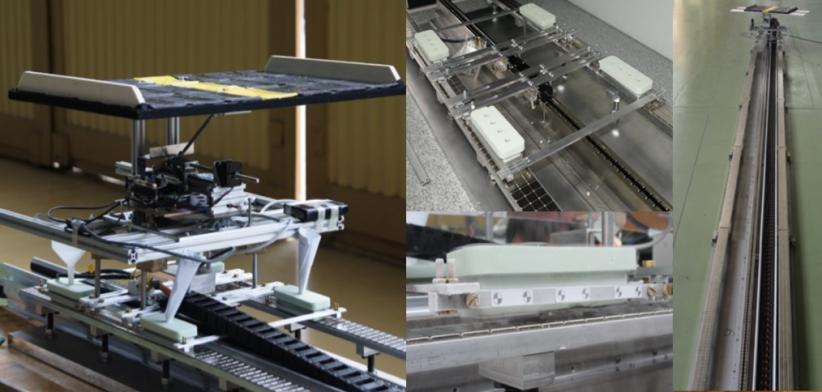Virtual reality supports research on UAV magnetic launcher prototype
Between 2011 and 2014, Professor Krzysztof Sibilski and his research team developed a prototype of an innovative launcher for unmanned aerial vehicles (UAVs) that uses passive magnetic suspension. Continuing this work, his daughter, Anna Sibilska-Mroziewicz, Ph.D., under the supervision of Professor Edyta Ładyżyńska-Kozdraś, is defending her doctoral degree and co-designing a virtual model of the launcher, increasing the chance of its popularisation.
The growing popularity of unmanned aerial vehicles forces researchers to intensify their work on increasing their safety during take-off and landing. Classic take-off launchers only allow the monitoring of movement parameters and control to ensure that they do not exceed acceptable values. Magnetic launchers seem to be a better solution as they facilitate flexible control of aircraft movement, repeatability of take-off parameters, protection against airframe overloading, and operator safety.
A prototype of such a launcher, based on the concept of passive magnetic suspension with diamagnets, was created by Professor Krzysztof Sibilski and his research team as part of the 7 PR UE GABRIEL project (Integrated Ground and On-Board System for Support of the Aircraft Safe Take-off and Landing).
“The constructed prototype consisted of tracks made of neodymium magnets, which generate a strong magnetic field, and a linear motor-driven launch trolley that levitates above the tracks. This is because supports made of a highly thermally insulated material are attached to the trolley, and there are high-temperature superconductors inside each support which, when cooled by liquid nitrogen, float above the tracks,” explains Professor Sibilski.
Research from 10 years ago demonstrated the need to develop mathematical and simulation models to investigate the phenomena associated with launcher operation. This work was conducted under the supervision of Edyta Ładyżyńska-Kozdraś - first as part of the doctoral thesis of Dr Anna Sibilska-Mroziewicz, and then in a project that was funded by the BEYOND POB II competition budget.
“In our research, we focused on analysing the dynamic properties of the launcher system. The developed mathematical model was implemented in the MATLAB environment, and the simulation results were visualised in virtual reality,” explains Professor Edyta Ładyżyńska-Kozdraś. “The conducted numerical tests included various take-off and landing scenarios, taking into account the assumptions made due to the design of the magnetic launcher, the UAV's ability to move in changing weather conditions, and the guidance procedure used.”
An important and innovative element of the carried out research was the use of VR goggles to image the behaviour in time and analyse the dynamics of the elements of the modelled magnetic launcher system, which was visualised in a video available on the platform https://encyclopedia.pub/video/video_detail/747.
The VR visualisation programme, implemented in Unity and running on the Oculus Quest VR goggles, facilitates real-time tracking and analysis of the 3D behaviour of the elements of the modelled launcher system. Users can track key motion parameters and manipulate the controllers to increase or decrease the speed of the simulation. In addition, there can be tactile feedback in the form of controller oscillations at specific moments in the simulation, such as when the UAV takes off or lands on the cart.
“We used virtual reality not only for observation but also to be able to use immersive technology to steer the UAV simulation with controllers,” says Dr Anna Sibilska-Mroziewicz. “This enhances the user's ability to explore and interact with the virtual environment, providing a more immersive and realistic experience,” she explains.
The project “Analytical and numerical studies of the process of take-off and landing unmanned aerial vehicle launchers utilizing the phenomenon of magnetic levitation” was funded by a research grant as part of the “Excellence Initiative - Research University” programme, which is conducted at the Warsaw University of Technology.
Research team:
Professor Edyta Ładyżyńska-Kozdraś; Anna Sibilska-Mroziewicz, PhD; Professor Krzysztof Sibilski


